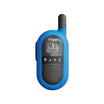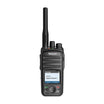What are Status Code Messages? Status Code Messages are predefined text messages used in two-way radio communications to convey specific information or statuses quickly and succinctly. These messages replace routine voice communications, such as "arrived at scene" or "task completed," providing a streamlined way to update team members or dispatchers.
How Do Status Code Messages Work? In two-way radio systems, users can send status codes with the push of a button, transmitting a specific code that corresponds to a predefined message. These codes are designed to be understood universally within the organization or team, minimizing the need for long, potentially misunderstood voice messages. The receiving radios or dispatch systems interpret the codes and display the corresponding text messages.
Why are Status Code Messages Important? Status code messages are particularly important in environments where time and clarity are critical:
- Efficiency: They allow for rapid communication without the need for lengthy explanations, enabling team members to send updates swiftly.
- Clarity and Precision: By standardizing messages, status codes reduce the likelihood of miscommunication that can occur with voice transmissions, especially in noisy or stressful environments.
- Discretion and Safety: In situations where discretion is needed, or where safety could be compromised by voice communication, status codes provide a silent way to communicate.
- Record-keeping: Using status codes can help in logging and documenting events accurately and efficiently for later review or for legal purposes.
Overall, Status Code Messages in two-way radio systems enhance communication efficiency, clarity, and safety, making them a vital tool for various professional settings, especially in fields like emergency services, security, and logistics. They ensure that essential information is conveyed quickly and accurately, supporting seamless operations and coordination.









































